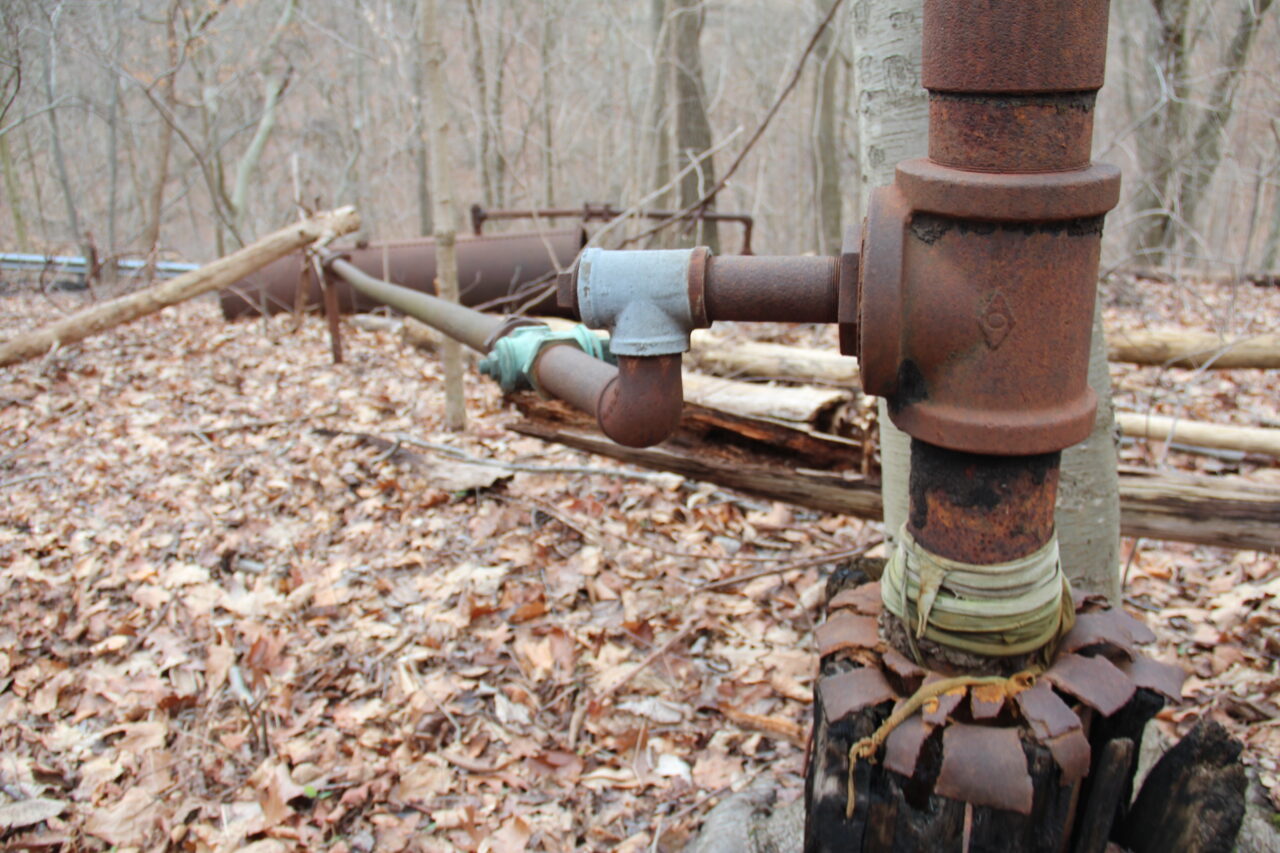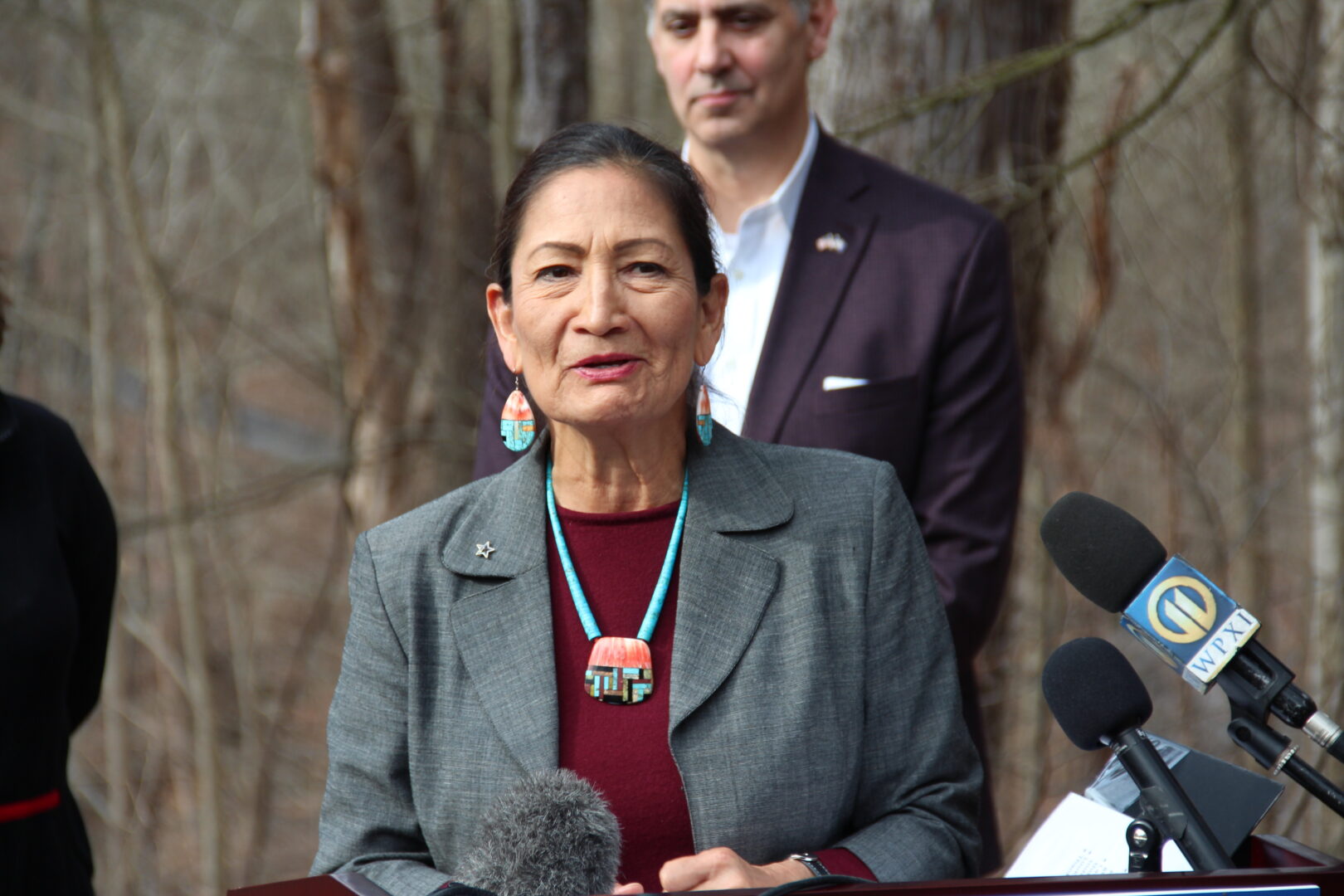Department of the Interior Secretary Deb Haaland was in Western Pennsylvania Thursday touting new funding available to clean up abandoned oil and gas wells.
President Biden’s Bipartisan Infrastructure Law, passed in 2021, allocated a record $4.7 billion for plugging oil and gas wells, with Pennsylvania expected to receive $330 million over the next decade.
Standing above an abandoned gas well at a private home in Allegheny County’s Ohio Township, Haaland said millions of people around the country live within a mile of these legacy sites, many abandoned decades ago.

Reid R. Frazier / The Allegheny Front
An abandoned gas well at the Ohio township, Allegheny County property of Ed and Mary Vojtas.
“They litter the landscape with rusted and dangerous equipment, posing safety hazards and threats to wildlife,” Haaland said. “Many of these wells have been left behind in backyards and recreation areas, nearby schools and community spaces.”
The homeowners, Ed and Mary Vojtas, have a well behind their house that will be sealed later this month with funding from the infrastructure law.
“I’m happy it’s leaving,” said Mary Vojtas, who said she’d frequently get requests from passersby to take the rusting metal tank and pipes by her house for scrap metal. She always refused. When she heard that the state would be plugging the well, she was relieved.
“I said, Thank you, God. Honest to God, I prayed all the time that we could get rid of it.”
In addition to being eyesores, the wells can pollute groundwater and release climate-warming methane, a greenhouse gas that is 72 times as potent as carbon dioxide at trapping heat over a 20-year period.
The EPA estimates the nation’s 2 million abandoned wells are the No. 10 source of methane, after sources like agriculture, oil and gas drilling, and landfills.
Pennsylvania leads the nation with over 20,000 abandoned wells.
Rich Negrin, acting secretary of the Pennsylvania Department of Environmental Protection, said at the event that the money Pennsylvania will get out of the infrastructure bill is badly needed.
“We know that there are 27,000 known or orphaned wells out here in Pennsylvania. Those are the ones that we know about. And we know that’s just the tip of the iceberg,” Negrin said.
Estimates vary regarding the actual number of abandoned wells in the state, home of the world’s first commercial oil well drilled in 1859. The DEP says there are likely 200,000 unaccounted-for wells in Pennsylvania.
The agency is using the state’s first allotment of $23 million from the bill to plug 235 wells this year, Negrin said. Over the last eight years, it has averaged about 18 wells per year.
Wells are still being abandoned
Despite this progress, Negrin conceded that companies in Pennsylvania can still abandon existing wells. The state issued over 3,000 violations to companies over the past five years for abandoning wells, according to a report by the DEP. Former Gov. Tom Wolf ordered the review when he disagreed with a bill on how federal well-plugging money would be used, but let it become law without signing it. The review revealed what the state calls a troubling “culture of non-compliance” by conventional oil and gas drillers.
The bill thwarted an attempt to make it harder for companies to abandon wells by increasing the amount of bonding required of oil and gas companies to drill new wells.
The current bond, which is money companies have to set aside to clean up their wells once they are no longer productive, is $2,500 for a shallow conventional well and $10,000 for an “unconventional” Marcellus shale well. The cost to actually seal in a well is $68,000, according to the DEP.
Negrin said that’s not a sustainable situation. Depending on how easy it is to reach a well, it can cost upwards of $100,000 to seal in hard-to-reach wells.
“It’s a real concern,” Negrin said. “The amount of that bonding really needs to reflect the reality of the practical effects of where those wells are. We need to get to them.”

















